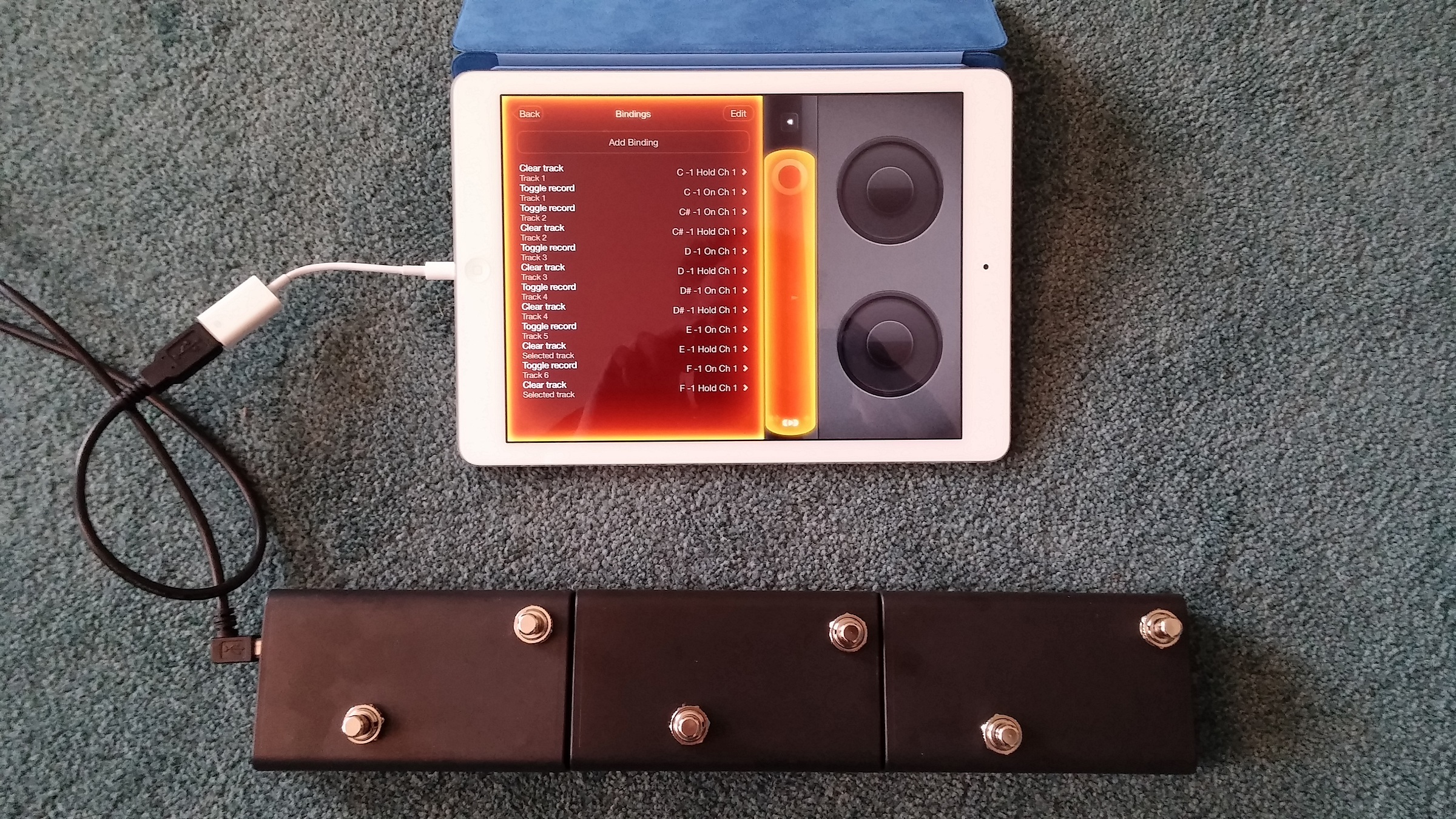As an active amateur music maker who likes to use technology with his art (thus combining two hobbies) I have been making tech to help me have more fun on stage. This has led to a programmable pedal board that connects to my digital mixer via WiFi and a multi-track recorder to automatically record our rehearsals. Both of those builds were based on the Raspberry Pi and required a lot of python code to make the solutions to work the way I needed.
The goal of this build was to get a cheap foot pedal bar that allows me to control apps such as Loopy HD hands-free. This allows me as an artist to keep eye-contact with the audience, otherwise I would need to look at the iPad all the time and risk getting sucked into looking at the screen rather than the people who came out so see me.
Pedal boards like Behringer’s FCB1010 are really useful for certain uses and affordable (I own one), but also very bulky to carry around. I needed something smaller and simpler for this purpose.
When browsing on the web I ran across some articles online that offered the parts of what I needed. This project was a quick combination of these parts to solve my problem. Hopefully it solves yours too.
The components
The iPad is a great platform for a musician/singer who needs effects at their fingertips. The audio processing in an iPad is speedy and this has led to a number of very useful apps for musicians, such as Loopy HD for looping and TC-Helicon’s VoiceRack FX for vocal effects. These apps can not only be controlled via the touchscreen but will also take MIDI commands.
The rather misnamed iPad Camera adapter turns the iPad’s lightning interface into a USB master. So any USB-class compliant device is suddenly recognised as a device on your i-device. This can be a USB-Audio interface or a USB MIDI interface, or with a USB hub both. More on the latter use case at the end of the article.
For the smarts of this build I decided to use an Arduino UNO as it has a useful party-trick: Its USB interface can be reprogrammed to be a USB MIDI HID device instead of the usual serial device. That makes it a plug-and play solution for my purposes.
This trick only works with the “real” Arduino UNO or an “expensive” Chinese version that has a 8u2 or 16u2 USB interface. The CH340 USB adapter on the cheaper Arduinos will not do this!
Next to the Arduino, very little is needed. For each button you need: just one foot switch, one capacitor, and a resistor. This build easily scales to 11 buttons with no thought. With some effort you can even add more, if you need that.
I spent some time searching for the right case for this build but found none that met my needs. I opted to use a couple of Strapuboxes from Conrad and fix them together. Any other cases you can lay your hands on will do just as well.
This build took me less than a day (not counting the drying time of the glue) and approximately €20 ($22.50).












